Clipart tagged: ‘church england’

Bishop Lancelot Andrewes
Lancelot Andrewes (1555 – 25 September 1626) was an English clergyman and scholar, who held high positions…

Buildwas Abbey (Cistercian)
The Cistercian Abbey of St Mary and St Chad was founded in 1135 by Roger de Clinton, Bishop of Coventry…

Norman Door, Canterbury Cathedral
After the Norman conquest in 1066, Lanfranc (1070-1077) became the first Norman archbishop. He thoroughly…
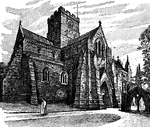
Carlisle Cathedral
It was begun during the reign of King Henry I by the first Bishop of Carlisle, the Englishman Athelwold…

Wells Cathedral, Somerset
Built between 1175 and 1490, Wells Cathedral has been described as "the most poetic of the English Cathedrals".…

Charles I of England
Charles I, (19 November 1600 – 30 January 1649) was King of England, Scotland and Ireland from…
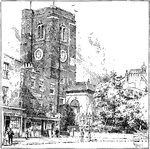
Old Church at Chelsea
Formerly it was the parish church of Chelsea when it was a village, before it was engulfed by London.…

Durham Cathedral
Founded in AD 1093, it remains a centre for Christian worship today. It is generally regarded as one…

Durham Cathedral from the Wear
Founded in AD 1093, it remains a centre for Christian worship today. It is generally regarded as one…

Ely Cathedral
Ely Cathedral (in full, The Cathedral Church of the Holy and Undivided Trinity of Ely) is the principal…
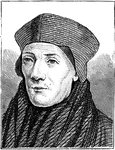
John Cardinal Fisher
John Cardinal Fisher (c.1469 – 22 June 1535), from 1935 Saint John Fisher, was an English Catholic…
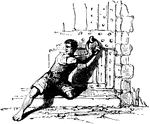
Fugitive Claiming Sanctuary
Sanctuary was also a right to be safe from arrest in the sanctuary of a church or temple, recognized…
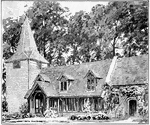
Greenstead Church
Greensted Church, in the small village of Greensted, near Chipping Ongar in Essex, England, is the oldest…

Lincoln Cathedral
It was the tallest building in the world for over 200 years (1300-1549), but the central spire collapsed…

Old St. Paul's Cathedral
Old St. Paul's is a name used to refer to the Gothic cathedral in the City of London built between 1087…
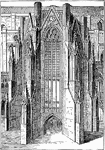
Chapter House of Old St. Paul's
Old St. Paul's is a name used to refer to the Gothic cathedral in the City of London built between 1087…

Puritan Costumes
A Puritan of 16th and 17th century England was an associate of any number of religious groups advocating…
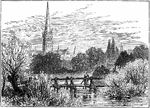
Salisbury Cathedral
Salisbury Cathedral is an Anglican cathedral in Salisbury, England, considered one of the leading examples…
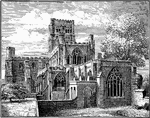
St. Alban's Abbey before the Modern Restoration
St. Alban's Abbey, Mainz (Stift St. Alban vor Mainz) originated as a Benedictine abbey, founded in 787…

St. David's Cathedral
The monastic community was founded by Saint David, Abbot of Menevia, who died in AD589. Between AD645…
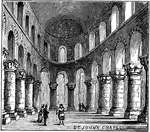
St. John's Chapel in the Tower
St. John's Chapel, or the Chapel of St. John the Evangelist, is located in the Tower of London. Dating…

St. Sepulchre's, Cambridge
The original Saxon church on the site was dedicated to St. Edmund the King and Martyr. During the Crusades…

Tintern Abbey, Cisternian
Tintern Abbey was founded by Walter de Clare, Lord of Chepstow, on May 9, 1131. Situated on the River…

Transept of the Martyrdom at Canterbury Cathedral
The transept is the area set crosswise to the nave in a cruciform ("cross-shaped") building in Romanesque…
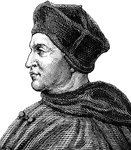
Thomas Cardinal Wolsey
Thomas Cardinal Wolsey (c.1470~1471 – November 28 or November 29, 1530), who was born in Ipswich,…